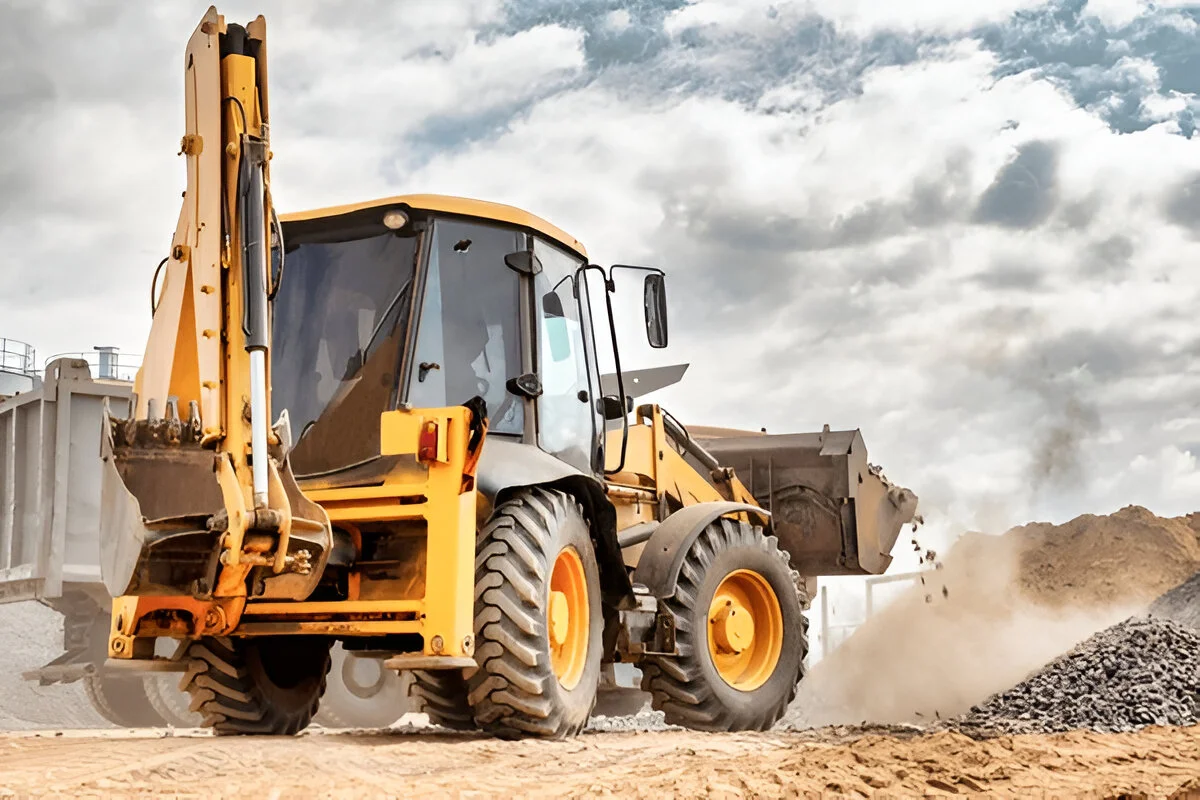
— July 25, 2025

Choosing the right backhoe loader boosts safety and productivity in construction and excavation. Whether you’re comparing it with a JCB excavator, Poclain machine, or mini excavator, factors like engine power, digging depth, and hydraulic performance matter. Ideal for all job sizes, it offers a cost-effective alternative to high excavator prices in India, including Tata Hitachi and CAT excavator models.
The right backhoe loader greatly affects your project when you are involved in heavy-duty construction and excavation. Backhoe loaders are very important in construction, landscaping, and agriculture; hence, choosing the right one increases productivity, safety, and overall cost-effectiveness. Using the wrong equipment can lead to higher costs and safety hazards.
According to a study, improper equipment use accounts for nearly 20 percent of all construction accidents. Consequently, selecting an appropriate backhoe loader greatly influences a project’s productivity, reduces downtime, and maintains safety on the job site.
In this blog, we will explore important factors to consider when purchasing or renting the right backhoe loader.
Major types would fall under excavation, landscaping, and utility. For construction, generally, a larger, more powerful, and full-sized backhoe would be needed, whereas landscaping or utility work would need something smaller and more agile.
Determining the tasks that needed to be done, like digging, lifting, trenching, etc. A backhoe suited for the primary task of digging must have enough depth and reach capabilities. A greater lifting capacity backhoe is needed for lifting and material-handling purposes.
A backhoe loader works on hard, soft, or rocky ground. It is always preferred with hydraulic strength and durability for hard or rocky terrain. On soft surfaces, it tends to have more weight distribution and traction to avoid sinking or tipping.
The duration for which the machine is required is important to identify. If the project is short-term, renting may be the best option; however, for long-term use, investing in a durable backhoe would be advisable.
Tight spaces or narrow access points may require a compact model for improved maneuverability without compromising performance.
While selecting a backhoe loader, several key features influence to a great extent the working of the loader, how efficiently it works, and how well-suited it is for the job.
Mentioning the engine power indicates the performance of the machine under the most unfavorable conditions when performance comes into question, expressed with horsepower measurement (HP). Besides that, sufficient torque is essential for lifting and digging operations; heavy machinery is constantly pressured to provide more horsepower and torque to not overload the machine itself.
Digging depth and reach enable the backhoe to excavate material deep or far. Consider your project’s requirements; if deep foundations or extensive excavation are needed, a model with extended reach is essential.
Lift capacity means the weight capacity that a backhoe can carry. Depending on whether it is soil, gravel, or debris, for whatever project you are working on, make sure to consider the loader’s capacity to lift and transport within an acceptable range for the equipment; otherwise, the machine will be overworked.
The hydraulic system should be strong for lifting and digging. Make sure that the backhoe hydraulic system is robust enough for the job, whether it needs to lift heavily or dig through hard ground.
The choice of either wheeled or tracked backhoes affects stability and mobility. Wheeled backhoes are generally faster and designed for dry, smooth surfaces, whereas tracked models are more stable on uneven or soft ground, making them a better choice in difficult conditions.
Consider what attachments you will need for your work, such as augers, breakers, or forks. Ensure that the backhoe loader can accommodate these attachments and is compatible with the machine’s hydraulic system.
When purchasing a backhoe, careful consideration should be given to the appropriate models or sizes to fit certain project requirements. Generally, backhoes are divided into three types—compact, medium, and full-sized—with each type designed for a different application.
Also, weight and maneuverability should be considered when selecting a suitable backhoe. The distribution of the weight and overall size of the machine dictates the extent to which it can maneuver on the site and carry loads. Heavier models are powerful but will not operate well in confined areas; on the other hand, lighter ones will not be effective for bigger demanding jobs.
The choice of the correct backhoe loader is vital for the successful completion of any construction project. This importance can be attributed to the assessment of the specific project requirements, special features of the machine, its size, and budget, which would ensure that one’s choice of the model is ideally suited in all aspects of power, maneuverability, and efficiency. Whether on a small residential task or a large construction project, having the right backhoe ensures maximum productivity, cost savings, and overall success for any project.
In the end, a careful assessment of your specific needs along with some good experts’ advice will enable you to make a well-informed decision. Buying or renting the right backhoe loader will go a long way toward enhancing productivity and ensuring that the job is done efficiently.